[...] and wanted to understand more of why linked lists are used. I'm not a full-time programmer, but I can code and always trying to learn. I do understand basic C/C++ but never had experience or had to use linked lists.
Linked lists are actually an extremely simple data structure. They come in a few varieties but the overall concept is just to allocate nodes and link them together through indices or pointers, like so:

Why is a linked list used in this situation?
Linked lists have some interesting properties, one of which is noted in the above diagram, like constant-time removals and insertions from/to the middle.
How come the structs aren't just created and stored in an array?
They actually could be. In the diagram above, the nodes can be directly stored in the array. The point of then linking the nodes is to allow things like rapid insertions and removals. An array of elements doesn't offer that flexibility, but if you store an array of nodes which store indices or pointers to next and possibly previous elements, then you can start rearranging the structure and removing things and inserting things to the middle all in constant-time by just playing with the links.
The most efficient uses of linked lists often store the nodes contiguously or partially contiguously (ex: using a free list) and just link them together to allow rapid insertions and removals. You can just store the nodes in a big array, like vector, and then link things up and unlink them through indices. Another interesting property of linked lists is that you can rapidly transfer the elements from the middle of one list to another by just changing a couple of pointers.
They also have a property which makes them very efficient to store contiguously when care is paid to their allocation in that every node is of the same size. As an example, it can be tricky to represent a bunch of variable-sized buckets efficiently if they all use their own array-like container, since each one would want to allocate a different amount of memory. However, if they just store an index/pointer to a list node, they can easily store all the nodes in one giant array for all the buckets.
That said, in C++, linked lists are often misused. In spite of their algorithmic benefits, of lot of that doesn't actually translate to superior performance if the nodes are not allocated in a way that provides spatial locality. Otherwise you can incur a cache miss and possibly some page faults accessing every single node.
Nevertheless, used with care about where the nodes go in memory, they can be tremendously useful. Here is one example usage:

In this case, we might have a particle simulation where every single particle is moving around each frame with collision detection where we partition the screen into grid cells. This allows us to avoid quadratic complexity collision detection, since a particle only needs to check for collision with other particles in the same cell. A real-world version might store 100x100 grid cells (10,000 grid cells).
However, if we used an array-based data structure like std::vector for all 10,000 grid cells, that would be explosive in memory. On top of that, transferring each particle from one cell to another would be a costly linear-time operation. By utilizing a linked list here (and one that just uses integers into an array for the links), we can just change a few indices (pointers) here and there to transfer a particle from one cell to another as it moves, while the memory usage is quite cheap (10,000 grid cells means 10,000 32-bit integers which translates to about 39 kilobytes with 4 bytes of overhead per particle for the link).
Used carefully, linked lists are a tremendously useful structure. However, they can often be misused since a naive implementation which wants to allocate every single node separately against a general-purpose memory allocator tends to incur cache misses galore as the nodes will be very fragmented in memory. The useful of linked lists tends to be a detail forgotten lately, especially in C++, since the std::list implementation, unless used with a custom allocator, is in that naive cache misses-galore category. However, the way they're used in operating systems tends to be very efficient, reaping these algorithmic benefits mentioned above without losing locality of reference.

